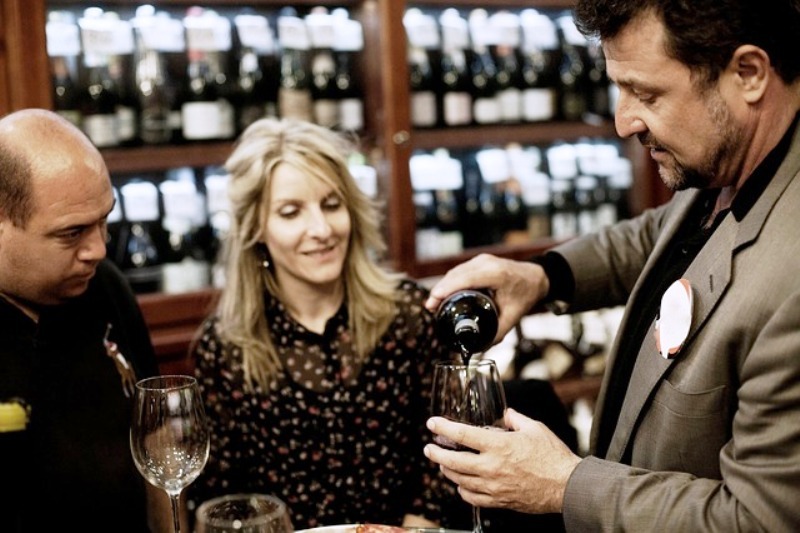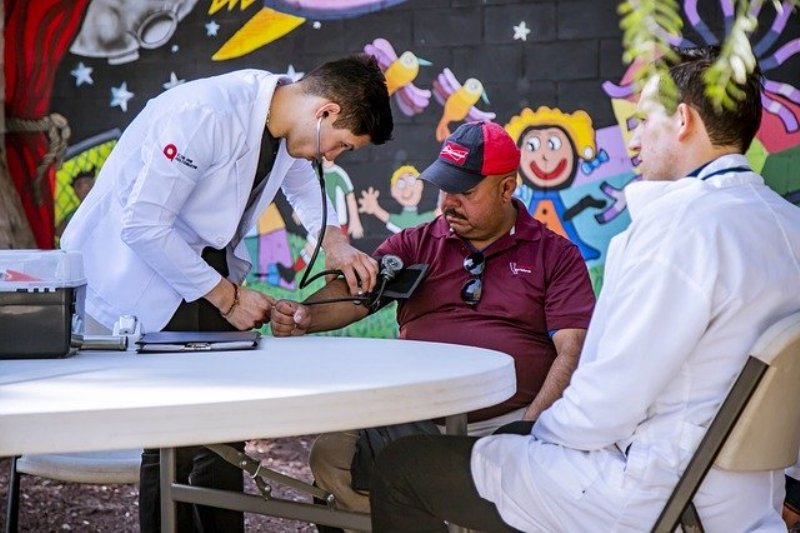
- What is a subject? – ¿Qué es un sujeto? I-yo,
- What is a verb? – ¿Qué es un verbo? speak-hablo,
- What is a complement? – ¿Qué es un complemento? Spanish-español
Let’s start with some basic concepts to understand how Spanish language works. – Vamos a empezar con algunos conceptos básicos para entender cómo funciona la lengua española.
SUBJECT+VERB+COMPLEMENTS / SUJETO+VERBO+COMPLEMENTOS I + speak + Spanish / Yo + hablo + español
If the videos are too quick for you, use the playback speed and captions buttons for slow motion and subtitles. It is advisable that you listen to Spanish people talking. If you are a complete beginner, join our Spanish Lessons and contact Susana for more information +34 661 74 36 45.
1. Subject pronouns – Pronombres personales de sujeto

SINGULAR / SINGLE FORM: there is only one person involved.
- yo – I
- tú – you (informal situation: friends, family, etc…)
- usted – you Sir or you Madam (formal situation: hotel, surgery, bank, etc…)
- él – he
- ella – she
- eso, ello* – it (it is understood, we do not write it)
PLURAL / MULTIPLE FORM: there is more than one person involved
- nosotros – we (all men or a mix) / nosotras – we (all women)
- vosotros – you (all of you men or a mix) / vosotras – you (all of you women) – (informal situation: friends, family, etc…)
- ustedes – you Sirs or you both, Sir & Madam (formal situation: hotel, surgery, bank, etc…)
- ellos – they (all men or a mix) / ellas – they (all women)
Note: There are object pronouns, but we will study them later on (me, you, him, her…) – Nota: Existen los pronombres personales de objeto, pero los estudiaremos más adelante (A mí me gusta, a tí te duele, a él le queda bien…)
2. Conjugations / Conjugaciones -ar, -er, -ir
Being able to identify verbs in Spanish and how to properly change their stem and their endings will help you greatly in order to improve your communication skills. Shall we start? – Ser capaz de identificar los verbos en español y como cambiar sus raíces y sus terminaciones te ayudará a mejorar tu forma de comunicarte. ¿Empezamos?
INFINITIVE=STEM+ending (To speak) INFINITIVO=RAIZ+terminación (HABLAR=HABL+ar)
All the Spanish verbs end in “-ar”, “-er” or “-ir”. To form a verb tense, we need to take the verb as we find it in the dictionary, drop the last two letters (in order to get the stem of the verb) and add the appropriate ending in each tense for each subject. – Todos los verbos españoles terminan en “-ar”, “-er” o “-ir” (1ª, 2ª y 3ª conjugación). Para formar un tiempo verbal, necesitamos coger el verbo como lo encontramos en el diccionario, quitar las dos últimas letras (así obtenemos la raíz del verbo) y añadir la terminación apropiada en cada tiempo verbal y para cada persona.
3. Types of verbs / tipos de verbos
Types of verbs: regular (pattern) or irregular (stem-changing or consonant-spelling changes) – Tipos de verbos: regulares (patrón) o irregulares (cambios en la raíz o cambios ortográficos)
Spanish verbs fall into different groups, and each group is conjugated a little differently. You need to identify which group a verb belongs to in order to be able to conjugate it – Los verbos españoles pueden pertenecer a diferentes grupos, y dentro de cada grupo se conjugarán de forma diferente. Necesitamos saber identificar a qué grupo pertenece cada verbo para poder conjugarlo:
- Regular verbs: follows regular conjugation rules for -ar, -er, and -ir verbs – Verbos regulares: siguen las reglas de conjugación fijas para las conjugaciones -ar, -er y -ir
- Stem-changing verbs: morphs depending on some non-regular rules. They have two stems. – Verbos irregulares con cambios en la raíz. Estos verbos tendrán dos raíces.

4. Dropping subject pronouns – Eliminación de los pronombre de sujeto
Because the endings of Spanish verbs indicate who the subject of an action is, you can often drop the subject pronoun (yo, tú, nosotros, etc.). Many Spanish speakers rarely use personal pronouns, although this varies from country to country. – El sujeto es prescindible en español, ya que el verbo incorpora información sobre el protagonista de la acción. En general, no solemos usarlo. Excepto si es necesario para especificar sobre quien se habla, por ejemplo distinguir si hablas de él o de ella, etc..
For example, in the sentence Hablo español. (I speak Spanish.), the pronoun yo isn’t really necessary. The -o ending tells you who the subject of the verb is, “yo”. – En la frase “Yo hablo español, no necesitamos escribir yo, ya que la terminación del verbo -o nos dice que el sujeto es yo.
4.1. Exercise: Add the subject in each sentence and indicate which are necessary (N) and which could be eliminated (X), as in these examples. We do not use it (eso, ello) in Spanish, it is understood (*). – Ejercicio: Añade el sujeto a cada frase e indica cuales son necesarios (N) y cuales se podrían eliminar (X), como en estos ejemplos. En español, no usamos “eso, ello”, se sobre entiende (*).
- ____ soy una persona muy activa. / Yo (X) soy una persona muy activa. (X) SE PUEDE ELIMINAR
- ___ tengo dos hijos, Pedro y Laura. ___ es muy tranquila, sin embargo, ____ es un torbellino. / Yo (X) tengo dos hijos, Pedro y Laura. Ella (N) es muy tranquila, sin embargo, él (N) es un torbellino. (N) NO SE PUEDE ELIMINAR
- ___ Hace frío por la noche. / (*) Hace frío por la noche. (*) SE SOBREENTIENDE
a. Los domingos __ me despierto a las doce. (ENLACE A VERBOS REFLEXIVOS)
I wake up at twelve on Sundays. (Click here to go to reflexive verbs)
b1. Mi hijo estudia hasta las nueve y media. Luego ___ juega a las cartas.
My son studies until half past nine. Then he plays cards.
b2. Mi hija estudia hasta las nueve y media. Luego ___ toca el piano.
My daughter studies until half past nine. Then she plays the piano.
b3. Tengo un hijo y una hija. ___ estudia hasta las nueve y __ juega al fútbol.
I have a son and a daughter. She studies until nine and he plays football.
c. Policia: “________ están detenidos”
Policeman: “Sirs, you are arrested”
d. __________ vivo en Murcia desde hace tres años.
I live in Murcia since three years ago.
e. Perdone señor, ¿Sabe _____ dónde está la comisaria?
Excuse me sir, do you know where the police station is?
f. El examen empieza a las ocho de la mañana. ___ va a ser muy fácil.
The exam starts at 8 am. It is going to be very easy.
g. _____ quiero bailar todas las noches esta semana.
I want to dance all nights this week.
h. María, primero, ___andas diez metros y entonces ___ giras a la derecha.
Maria, first you walk for ten meters, and then you turn right.
i. El tren sale a las siete de la tarde. ___ tarda una hora en llegar.
The train leaves at 7 pm. It takes one hour to get there.
j. Pedro, ¿cómo estás _____ ? ______ estoy muy cansado/a.
Pedro, how are you? I am very tired.
k. Señoras, ______________ llegan tarde.
Madams, you are late.
l. ¿Por dónde sale el sol? ___ Sale por el este.
Which direction does the sun rise? It rises in the Eastern
4.2. Exercise: Add the subject and the verb in each sentence and indicate which are necessary (N) and which could be eliminated (X), as in these example. We do not use it (eso, ello) in Spanish, it is understood (*). – Ejercicio: Añade el sujeto y el verbo en cada frase e indica cuales son necesarios (N) y cuales se podrían eliminar (X), como en estos ejemplos. En español, no usamos “eso, ello”, se sobre entiende (*).
m. Sr. Sánchez, ¿cómo _________ _____ ? ______ _______ muy cansado/a.
Mr. Sánchez, how are you? I am very tired.
n. Marta, _______ _______ tarde. (LLEGAR)
Marta, you are late.
ñ. Marta y Juan, _______ _______ tarde. (LLEGAR)
Marta and Juan, you are late.
o. Sr. y Sra. Pérez, ¿cómo _______ _______ ? ____ ____ muy cansados/as.
Mr. and Mrs. Perez, how are you? We are very tired.
p. El plátano no está maduro. Por eso ____ ____ verde.
The banana isn’t ripe. That is why it is green.
q. Los yogures son muy cremosos. ¿De qué marca _____ ___?
The yoghurts are very creamy. What brand are they?
5. Diferencias con el inglés – Differences with English
5.1. We do not use a subject
¿Qué haces (tú)? (Yo) Estoy limpiando el salón.
What are you doing? I am cleaning the living room.
5.2. There is not a subject for it
(Yo) me he comprado un vestido nuevo. (El vestido) Es bonito
I have bought a new dress. It is nice
5.3. We have to use a subject when it is not clear who/what we are talking about.
(Tú) te has comprado un vestido y un pantalón. El vestido es rojo.
You have bought a dress and a pair of jeans. The dress is red.
6. Ejercicios – Exercises
6.1. Ejercicio – Exercise
Add the subject in each sentence and indicate which are necessary (N) and which could be eliminated (X), as in these examples. We do not use it (eso, ello) in Spanish, it is understood (*). – Ejercicio: Añade el sujeto a cada frase e indica cuales son necesarios (N) y cuales se podrían eliminar (X), como en estos ejemplos. En español, no usamos “eso, ello”, se sobre entiende (*).
| ENGLISH | ESPAÑOL |
| I send the letter | ___ envío la carta. Yo(x) envío la carta |
| You play football | ___ juegas al fútbol |
| He needs some money | ___ necesita dinero |
| She buys a ladies bag | ____ compra un bolso |
| Mr. Martínez, do you speak English? | ¿Habla ________ inglés? |
| Mrs. Martínez, do you speak Spanish? | ¿Habla ________ español? |
| It’s a dream | ____ es un sueño |
| We have a dog | ________ tenemos un perro |
| You play tennis together | _________ jugáis al tenis juntos |
| They speak French | ________Hablan francés |
| Mr. and Mrs. Martínez, do you speak German? | Hotel: ¿Hablan _________ alemán? |
| They eat bananas | _______ comen plátanos |
| Doctor: “you are fine” | Médico: “____ está bien” |
| Receptionist: Are you Mrs. Romero? | Recepcionista: ¿Es ____ la Sra. Romero? |
| You, guys, are my best friends | ____ , chicos, sois mis mejores amigos |
| The lemonade is too acid. Do you like it? | La limonada está demasiado ácida. ¿Te gusta ____? |
| I have a sister and a brother (siblings), Estela y Alberto. She is a nurse, he is a plumber. | Tengo dos hermanos, Estela y Alberto. ____ es enfermera y ___ es fontanero. |
6.2. Ejercicio – Exercise
Write these sentences in Spanish using the subjects just when they will be necessary – Escribe estas frases en español. Escribe los sujetos solo cuando sean necesarios.
| ENGLISH | SPANISH |
| My father sends flowers to my mother. | |
| We play cards | |
| They need some money | |
| Ladies, you buy some ladies bags to give away | |
| Mr. Martínez, do you speak French? | |
| Peter, do you speak Spanish? | |
| It’s a nightmare | |
| Have you got a dog? | |
| Do you play tennis together? | |
| They do not speak Italian | |
| Policeman: “Mr. and Mrs. Martínez, do you live in London?” | |
| My children eat apples everyday | |
| Doctor: “Are you ok?” | |
| Receptionist: Are you Mr. and Mrs. Romero? | |
| My brother is my best friend | |
| Two friends in a restaurant: “The chips are too oily. Do you like them?” | |
| You have a daughter and a son; Estela y Alberto. She is a waitress, he is a teacher. |
6.3. Ejercicio – Exercise: write some dialogues – escribe diálogos para cada foto.
At the end of the page, there is a LEAVE A REPLY section to send us your answers to this exercise: Write a question and an answer for each one of the pictures indicating who is asking and who is replying. *Note: there is a list of verbs underneath the pictures. – Al final de la página hay un apartado para enviarnos tus respuestas a este ejercicio “LEAVE A REPLY”: Escribe una pregunta y una respuesta para cada una de las fotografías indicando quien pregunta y quien responde. *Nota: hay un listado de verbos a continuación de las fotos.
- –María: “Pedro, ¿qué quieres tomar?
- –Pedro: “Quiero un café con leche.
- –Sonia: “Marta, ¿qué haces?
- – Marta: “Estoy leyendo un mensaje”
Nota: Los siguientes verbos te pueden ayudar a completar las frases: querer / desear / estar / ser / pedir / gustar (a mi me gusta/n…. a ti te gusta/n)…. añade más a la lista. Gente: recepcionista /nurse / waiter-waitress
Note: The following verbs can help you complete the sentences: TO… want/ wish / be / be/ order-ask / like…. add more to the list / People: recepcionista / enfermero/a, camarero/a…
And remember!! Practice makes perfect
Come to practise with Spanish native speakers in our >> Off The Cuff Talks! << be brave and ask them ¿Qué estás haciendo?
Did you find it useful? Then, please… FEEL FREE TO SHARE IT!
Do you have any doubts or even a contribution? Please fill out the form at the bottom, and we will get back to you asap⏬
Join our Spanish lessons in Torre de la Horadada, San Javier, Mar Menor Golf Resort and Sucina (Casas Blancas)
This is just a small example of what you can learn. Get the support of the best Spanish Tutor in the area, Susana Romero, and enjoy learning Conversational Spanish.













